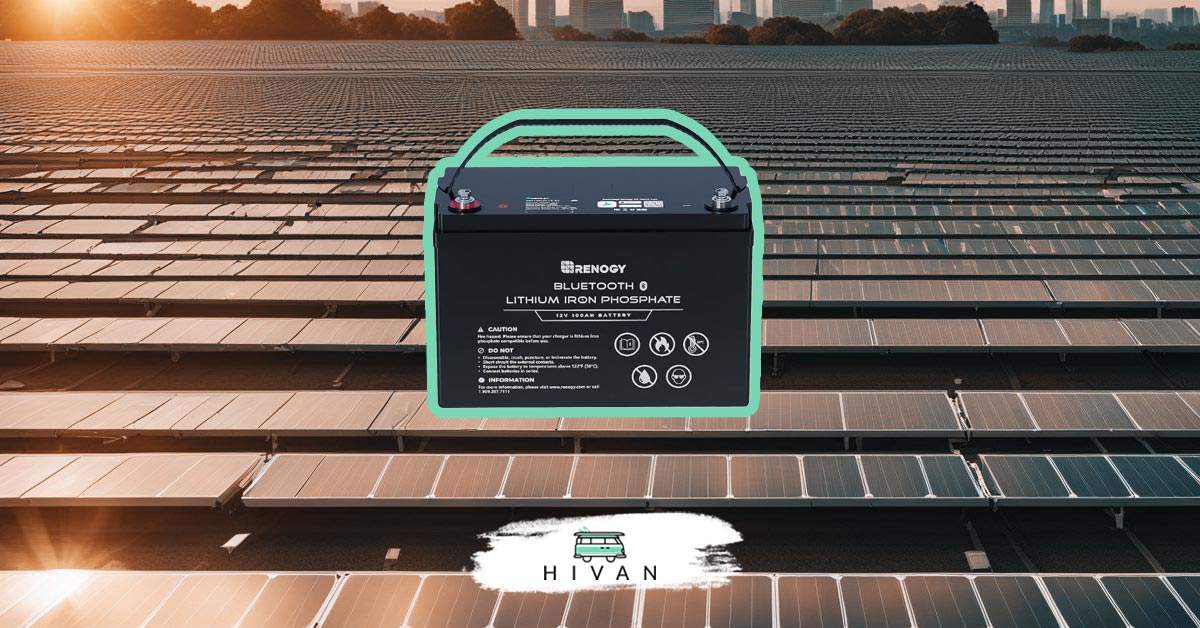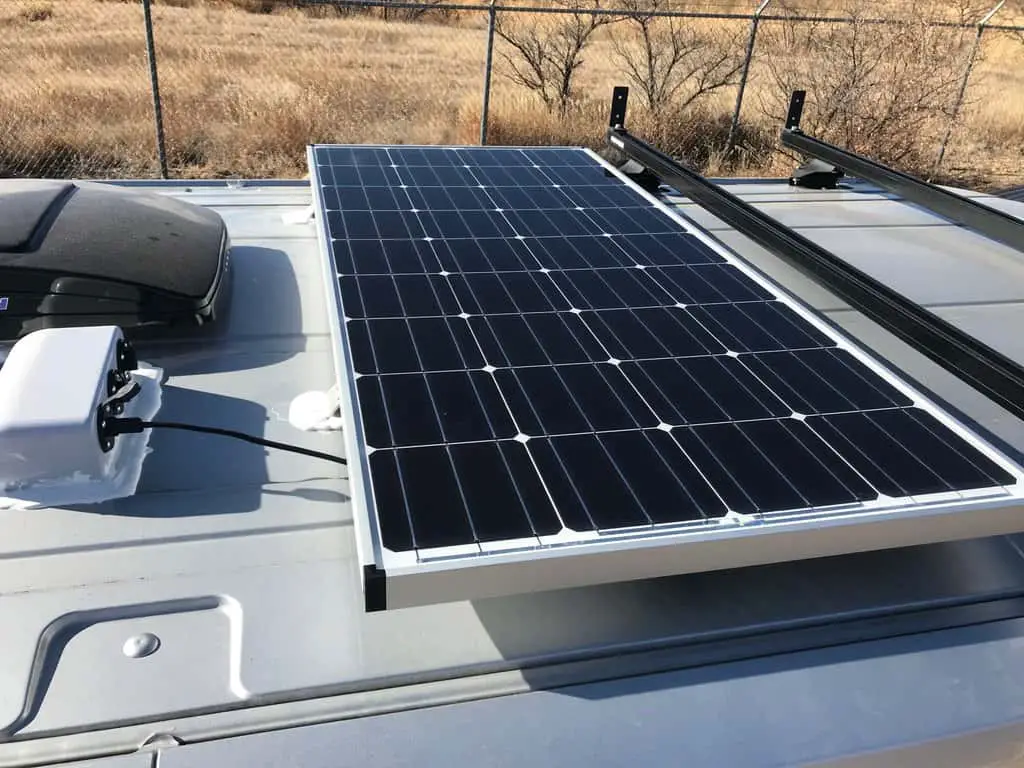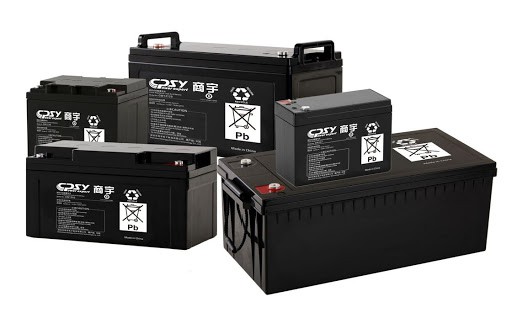The number of solar panels required to charge a 12V battery depends on several factors, such as the size of the
The number of solar panels required to charge a 12V battery depends on several factors:
- the size of the solar panels
- the efficiency of the panels
- the amount of sunlight available
- the capacity of the battery.
As a rough estimate, a 100W
![]() with one 100W
with one 100W
![]() with two 100W
with two 100W
It’s important to note that you should always use a charge controller when charging a battery with a

In this article, we will tell you everything you have to know about solar panels, batteries, and some of the electronic appliances that you can power up using. At the end of the article, you will be more than ready to install solar panels on your RV. Learn why it is the best power source option for people living the RV life!
How much energy could solar panels produce?
The amount of energy your solar panels could produce would depend on two factors, namely the size of your solar panels and the amount of time you expose it to direct sunlight.
The average size of solar panels used in RVs is that of 100 watts. This size of solar panels mostly comes with specifications such as 156mm x 120mm in size, has 36 solar cells in total, and has the Maximum System Voltage of 600V DC.

A 100 watts
We know what you are thinking, depending on a 100 watts battery would be a bit hard if not entirely impossible, right? Aside from the fact that the weather is not always favorable to get enough sunlight, it would be hard to always find a parking space that would be free from any overhead trees or roofs that could obscure your solar panels.
This is why people either install multiple 100 watts solar panels or opt for bigger ones such as 250 watts and 500 watts. According to Ken Brook Solar, a 250 watts
Related Articles: How do solar panels work on a van? (an in-depth look) How many solar panels do I need for my van?
What can be powered up by a 12v battery if fully charged?
There really is no best battery to be used with solar panels. It really depends on your needs. But, as mentioned a while ago, the most common battery used by people living in RVs is a 12v battery.
A fully charged 12V battery can power a variety of devices, including:
- Small electronics such as cell phones, tablets, and laptops using a power inverter.
- Portable fans, lights, and radios for camping or emergency situations.
- Electric scooters, bicycles, and other small vehicles.
- Marine and RV equipment such as lights, pumps, and refrigerators.
- Power tools such as drills, saws, and sanders.
- Home security systems and surveillance cameras.
- Solar-powered lighting and irrigation systems.
However, the amount of time a 12V battery can power a device depends on the capacity of the battery and the power consumption of the device. It’s important to check the manufacturer’s specifications for both the battery and the device to ensure compatibility and safe operation.

You could also use your 12v battery for heating items such as your microwave, oven, water heater, and more but only for a limited time since most heating items demand more power than regular appliances.
Besides these regular household items, your 12v battery could also let you recharge your smartphones, laptops, tablets, and other electronic devices for a decent amount of time.
How to install solar panels?
Now that you already know the basics of solar panels and 12v batteries, it is now time for you to understand how to install them on your RVs.
Bear in mind that the installation of your solar panels could really make or break your power source. Not that it could literally ruin your solar panels, but it would determine if they could generate an ample amount of energy to power up your 12v batteries. Remember that no matter how expensive your solar panels are, if you will not be able to expose them to direct sunlight, they would be utterly useless.

Some RV owners choose to just carry their 100 watts
This is why installing your solar panels on your RV’s roof is still the best option for people who really want to make the most out of their solar panels. Aside from the fact that it saves so much time and effort since you do not have to bring out your solar panels from your RV regularly, it would also let your solar panels produce more energy since they are constantly exposed to direct sunlight.
But how do you really install solar panels in your RVs? While it could be a challenging task for homeowners, it is actually pretty simple when you do it in your RVs!
Related Articles: Can I connect a solar panel directly to a battery in my van?
If you are a novice in solar panels, you might want to buy those that already have frames on them. Though they could be more expensive than regular solar panels, they can save you so much time and energy especially if you lack metal hardware skills. These framed solar panels would come ready to install on your RV roof.
Sure enough, you would not want to drill your RV roof and create permanent holes. This is why the best way to install solar panels in your RV roof is first to secure enough sika glues. What you should do is to mark the drilling points of your
Related Articles: How to attach solar panels to a van roof
Through the use of sika glues, you would be able to securely drill your solar panels on their right positions without causing any permanent damage to your roof! This way, you could switch back to using gas-powered generators or battery inverters anytime you would like to!
Now that you have already secured your solar panels’ positions, it is now time to hook them up to your batteries. Pau Hana Travels drew a detailed diagram, together with a series of vlogs, on how you could adequately install your
Aside from the diagram, the vlog of Will Prowse of DIY Solar Power entitled “DIY 400 Watt 12 Volt Solar Power System Beginner Tutorial: Great for RV’s and Vans!” could also come in handy when hooking up your solar panels to your 12v batteries.
So, now that you know the basics of solar panels and 12v batteries, including their specifications, installation, and wiring, you are all set up to power up your entire RV with these solar panels and enjoy the big savings it could give you! Don’t waste your time and try it now!

